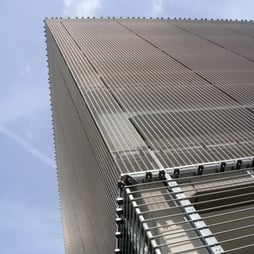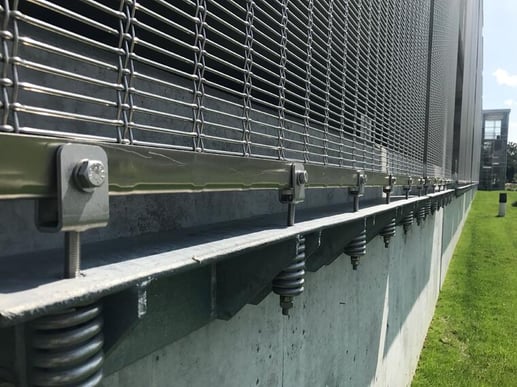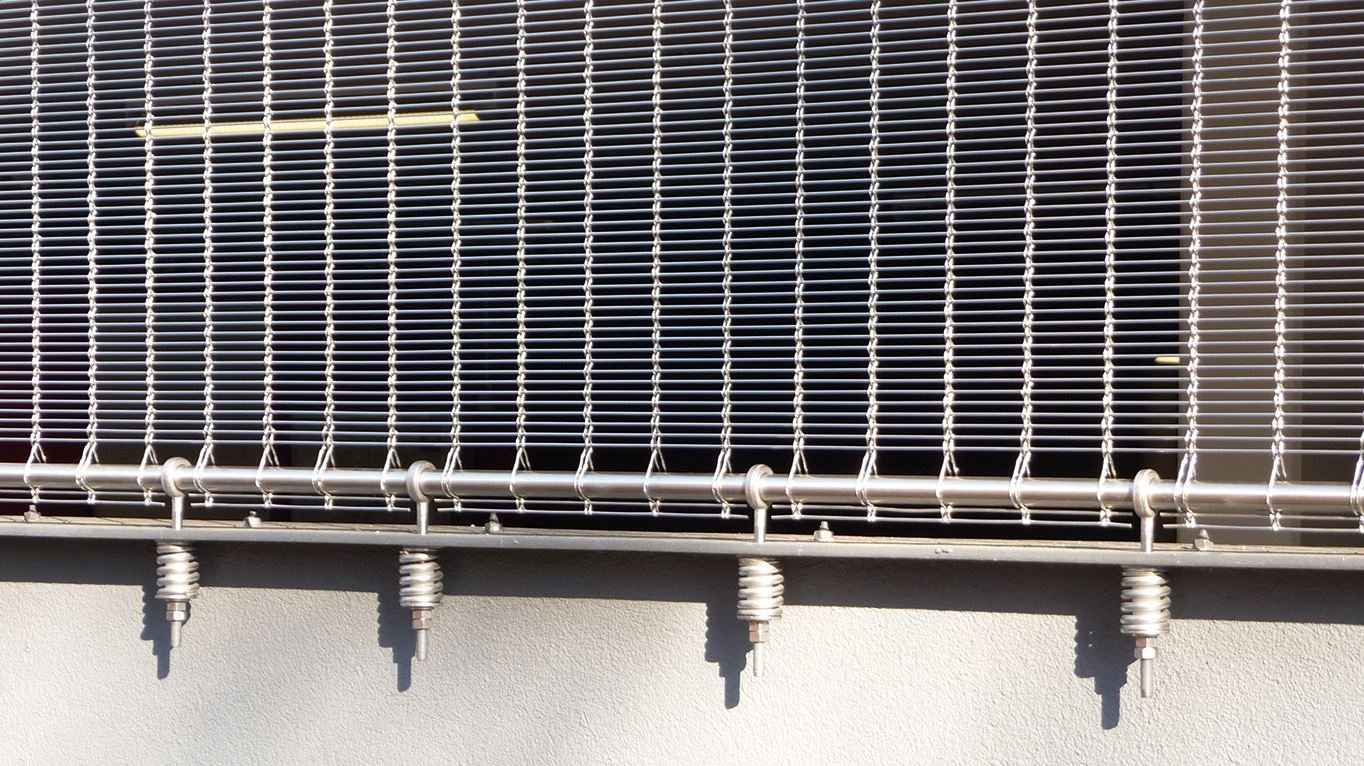Why Must Decorative Wire Mesh Panels Be Tensioned?
Architectural Mesh - Exterior | Architectural Mesh - Interior
From parking garage facades to elevator cab interiors, decorative wire mesh delivers a versatile wow factor that is one-of-a-kind. It perfectly balances durability with aesthetic making, so its only limitation is your imagination.
But to successfully portray your vision, decorative wire mesh panels must be pulled into specific amounts of tension. But what does tensioning your meshing do, and what happens when you don't?
For over 20 years, W.S. Tyler has helped architects distinguish the feasibility of the many characteristics of decorative wire mesh. This is an effort to help you feel confident that you picked the right design material.
This article was written to clarify why decorative wire mesh needs to be tensioned and will cover:
- The importance of tensioning decorative wire mesh
- How decorative wire mesh is tensioned
- The tensioning loads you can expect
- The consequences of not tensioning decorative wire mesh
Why Must Decorative Wire Mesh Panels Be Brought in Tension?
 There are several reasons why decorative wire mesh must be brought into tension. First and foremost is the visual appearance of the mesh.
There are several reasons why decorative wire mesh must be brought into tension. First and foremost is the visual appearance of the mesh.
When not correctly tensioned, decorative wire mesh panels will buckle and bow in various sections of the panel. When light is reflected off the mesh, this buckling and bowing are prominent flaws to onlookers.
In other words, failure to tension decorative wire mesh prevents the panels from having the nice, homogeneous look that the material is known for.
Now, when it comes to patron safety, tensioning your decorative wire mesh panels will keep them secure and in place. When the mesh is not in tension, there is a good chance it will 'float' around as the wind hits the panel.
Not only does this have the potential to hit visitors, but as the mesh moves around, it also increases the loads being put on the substructure. This, in turn, increases the risk of the substructure pulling away from the building itself, resulting in costly damage and potential harm to patrons.
Tensioned decorative wire mesh panels are also important when looking at fall protection applications. If the panels are in full tension, they will be able to withstand the impact of some falling/bumping into the mesh and prevent them from falling from dangerous heights.
If the panels aren't in full tension, there is an increased chance that someone falling into the mesh will pass/fall through the panels.
What Keeps Decorative Wire Mesh Panels in Proper Tension?
From clevis hardware to flat tension profiles, a decorative wire mesh system is installed using mounting hardware designed to tension the panels. Of the various pieces of hardware, however, the pressure springs located on the bottom of the panels are the key contributor to keeping the mesh tensioned.

The decorative wire mesh supplier will work with your design team and contractor, informing you of the exact compression that contractors should apply to the springs. Once the springs are fully compressed, the panels will be pulled into full tension.
These pressure springs also allow for any expansion or contraction in the panels. So if it's cold, the mesh will contract, or if it's hot, the mesh will expand, and the springs help facilitate this flexibility.
Adding to this list of functionality, the pressure spring of a decorative wire mesh system helps the panels absorb any sort of impact.
For instance, let's say a telephone pole falls and strikes the mesh during a severe storm. The spring will provide the ability to absorb the force of the impact but revert and bring the mesh back into tension as soon as the pole falls off the mesh.
To put it simply, the pressure springs are the workhorse.
Now, it's important that these springs are only needed for panels that exceed 10 feet in height. Decorative wire mesh panels less than 10 feet can be pulled into tension simply using the clevis hardware system.
What Tensioning Loads Are Decorative Wire Mesh Panels Subjected To?
Without environmental factors like wind or snow, decorative wire mesh is typically subjected to 400- to 600-pound tensioning loads per linear foot. Once you start taking building code requirements, such as wind loads and ice buildup, into consideration, you are going to see tensioning loads ranging from 1400 to 1600 pounds per linear inch.
Because this puts a lot of weight on the substructure, the mesh supplier will typically supply structural calculations to ensure your substructure can withstand worst-case scenarios.
What Are the Consequences of Not Tensioning Your Mesh Properly?
Again, not tensioning your decorative wire mesh panels properly will potentially hinder their appearance and safety.
Visually, the mesh will not have the bright, shiny appearance it's known for across the entire elevation. Safety-wise, you risk weakening the substructure and having it pull away from the building.
Make Your Decorative Wire Mesh Panels Unique
Decorative wire mesh must be subjected to tension loads ranging from 1400 to 1600 pounds per linear inch. Doing so ensures the mesh weaves your vision into reality accurately and, more importantly, safely.
When working with decorative wire mesh, it is essential to know that each application is like a snowflake. The weave pattern, percentage of open area, colorization, and other various specifications are all unique to a specific application.
This is why it's important to understand how you can customize your mesh to best accommodate the needs of the design.
W.S. Tyler has helped architects incorporate decorative wire mesh into their architectural design process for 20 years, helping to remove the obstacles that can cause projects to stall.
To learn more about how you can customize your next decorative wire mesh system, read the following article:
About Ronnie Brown
Ronnie is the Content Writer for W.S. Tyler and has four years of experience as a professional writer. He strives to expand his knowledge on all things particle analysis and woven wire mesh to leverage his exceptional writing and graphic design skills, creating a one-of-a-kind experience for customers.




